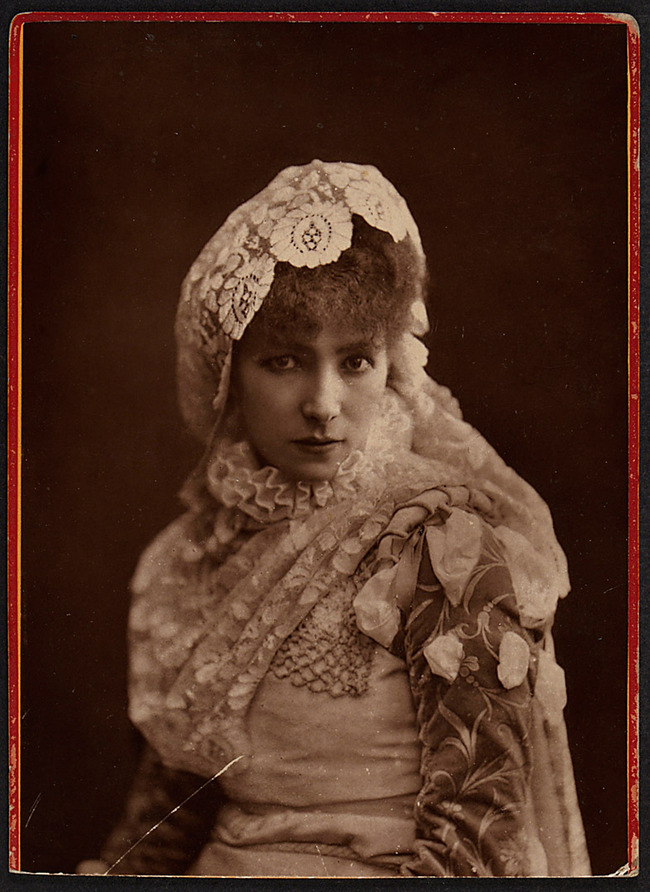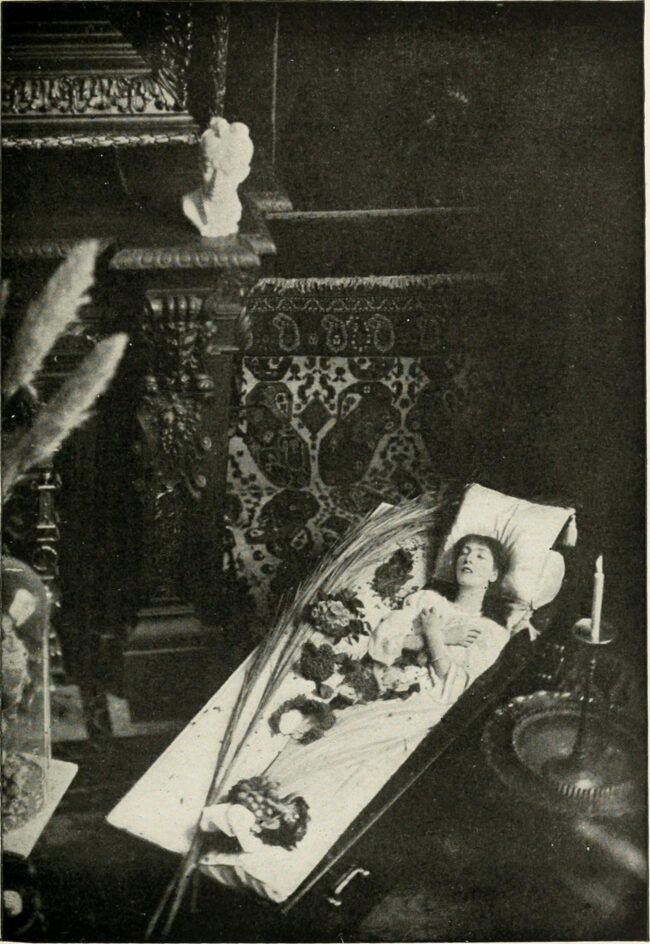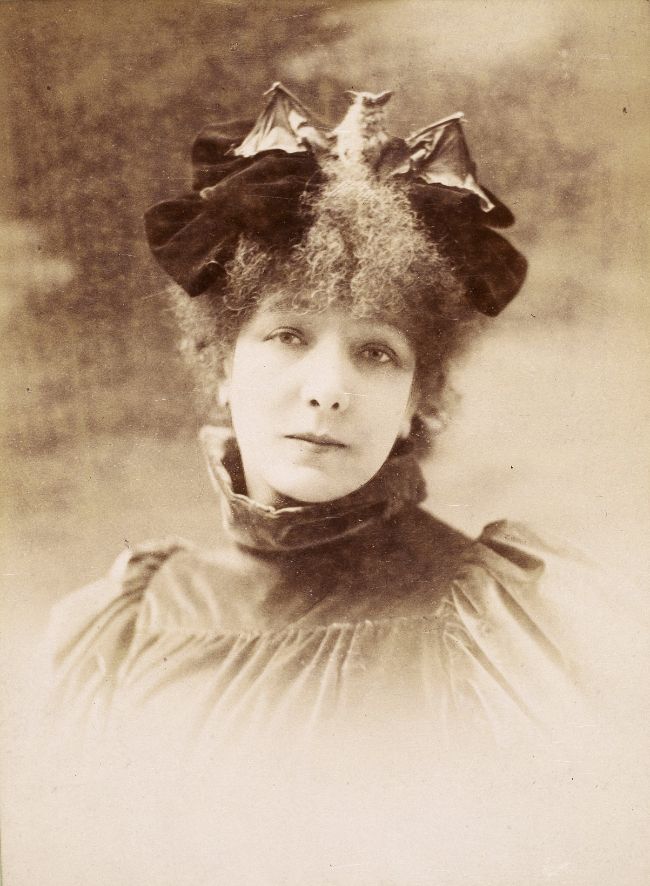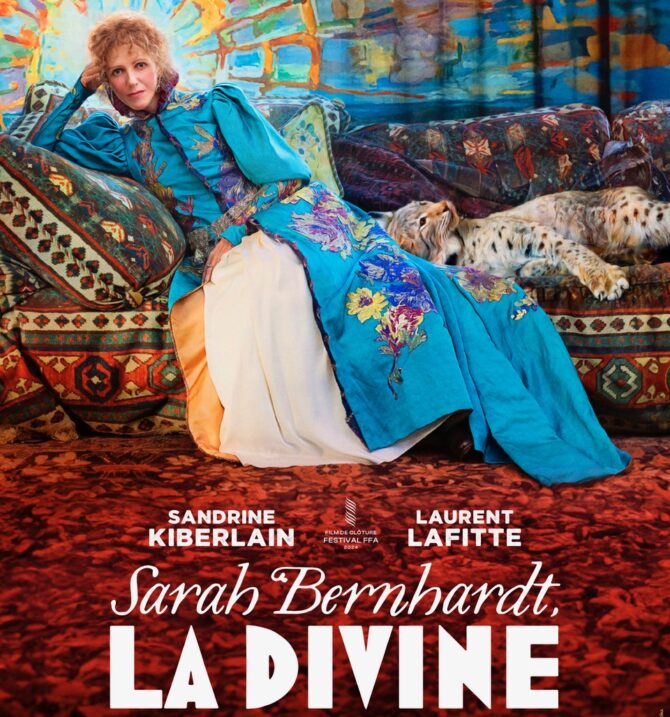Sarah Bernhardt, La Divine: The Once and Future Mega-Star
- SUBSCRIBE
- ALREADY SUBSCRIBED?
BECOME A BONJOUR PARIS MEMBER
Gain full access to our collection of over 5,000 articles and bring the City of Light into your life. Just 60 USD per year.
Find out why you should become a member here.
Sign in
Fill in your credentials below.
It’s no overstatement to say that the great actress Sarah Bernhardt was the world’s first global mega-star. There were some precursors: Edmund Kean, the Shakespearean actor, and opera singer Jenny Lind (“the Swedish Nightingale”), whose fame spread beyond their native lands. But the Divine Sarah’s fame was truly worldwide: She performed for the queen of Hawaii, in Texas, in San Francisco after the quake of 1906, before the Prince of Wales. She was received with rapture everywhere she went. What makes this astounding is that most of her career took place before modern mass media. It was based exclusively on live performance. Like Bob Dylan a century later, she traveled so much (to pay huge debts incurred for huge expenses) that her career can be defined as a never-ending tour.
Now the brilliant actress Sandrine Kiberlain (The Patriots, Beaumarchais, A Self-Made Man) brings Bernhardt to the 21st century in Sarah Bernhardt, La Divine, directed by Guillaume Nicloux. Bernhardt’s life and career straddled two centuries (she was born in 1844, a year after Abraham Lincoln’s son, and died in 1923, three years before my own father’s birth). It would have required Megalopolis-scale means to tell all of her story. In addition, Ms. Kiberlain is a certain age. She ably portrays different ages in the role, from middle-age to elderly, but going beyond these would have meant synthetic de-aging (or using multiple actresses). So the film sticks to one episode in Bernhardt’s life, but a crucial one: her relationship with the actor Lucien Guitry, both the greatest love and greatest heartbreak of her life.

Sarah Bernhardt as doña Sol. Photo: Nils Personne/Wikimedia Commons
La Divine starts towards the end of her life, after she had to have a leg amputated. Sacha Guitry, the great playwright and filmmaker (and son of Lucien) wants to immortalize Bernhardt on film (he’d make a few short, silent reels of her). He’s taken aback to learn of her relationship with his father and asks for details. She proceeds to recount the story, sometimes jumping about in chronology.
Nicloux uses the love story to work in much of Bernhardt’s life and times. This often amounts to the cinematic equivalent of name-dropping (Zola! Freud! Rostand!). He doesn’t follow up on the names much, so the cameo by Freud, for example, doesn’t have the same impact as Freud’s appearance in Ragtime.

Sarah Bernhardt posing in her coffin. Photo by Mélandri, around 1880
The director is more successful milking the drama out of a contrast situation: the day when European high society celebrated Bernhardt and Lucien Guitry’s ending their relationship (to marry another actress) on the same day. Both the drama and the spectacle of the all-star celebration are powerful, if not subtle. The film in general and its characterization of Bernhardt are never especially subtle. We get only hints as to what motivated her in her career (a messy familial origin story) or her approach to the art of acting. Instead, we mostly get Sarah Bernhardt as a roaring life force.
Bernhardt certainly was that. Sandrine Kiberlain does a masterly job impersonating her. She’s effective for an ironic reason: in her own approach to acting she’s the anti-Bernhardt. Instead of projecting her personality through whatever role (à la Bernhardt), she disappears into the character. (There’s a similar difference between Marlon Brando and Laurence Olivier.) This is complicated by the fact that Ms. Kiberlain doesn’t look at all like Bernhardt. Much of Bernhardt’s physical charisma was due to her “dark Oriental Jewish looks”, to put it in caricatural terms. Ms. Kiberlain herself has Jewish roots, but the qualities in question are aesthetic rather than ethnic or religious.

Otto (Otto Wegener dit), Sarah Bernhardt au chapeau chauve-souris, 1899 ou 1900, Épreuve sur carte de visite albuminée, Paris © BnF
There is a segment featuring discussion and debate about the Dreyfus case, the cause célèbre concerning a Jewish military officer convicted of treason (and later exonerated). France was divided then into Dreyfusards and anti-Dreyfusards. Bernhardt is portrayed as the former, and her son the latter (which was true). When Bernhardt flings a glass of water at him this is justifiable poetic license, but the director exaggerates Bernhardt’s role in the affair (she’s depicted as motivating Emile Zola to write his famous articles advocating for Captain Dreyfus). This is in line with biopics that feel obligated to link their subjects to contemporary mores. Left out is the fact that Bernhardt was an ardent French patriot in wartime. She operated a hospital for wounded soldiers during the Franco-Prussian War, and later agitated in the US for American entry into WWI.
In addition to Ms. Kiberlain, Laurent Lafitte (who starred with her in Meet the Barbarians) gives a strong performance as Lucien Guitry. Grégoire Leprince-Ringuet and Arther Mazet, as respectively Bernhardt’s son Maurice and Guitry’s son Sacha, are sensitively callow and sympathetic. The rest of the supporting cast is a serviceable ensemble, but not especially exciting. Even Amira Casar, as Bernhardt’s lesbian BFF is respectful and respectable—only her mannish suit stands out.

Félix Tournachon dit Nadar, Sarah Bernhardt chez elle, c 1890, épreuve sur papier albuminé, Petit Palais, musée des Beaux-Arts de la Ville de Paris, France © Paris Musées / Petit Palais
The style of the film, despite some chronological hopscotch and winsome titles announcing time periods, is as staid as can be. Certain films used to be described as “straight to video” or “straight to the DVD bin.” If it were just a question of directing style and technique, this film would be “straight to A&E.” Even the sex scenes (a few brief ones) might be labelled “de la Comédie Française.”
Many years later, Sarah Bernhardt’s renown has receded to mostly French memes: names on theaters, cafés, and streets. But as the film demonstrates, with her attitudes regarding gender (playing male as well as female roles), her bisexuality, her disabledness (performing on one leg late in life), her Jewishness and anti-anti-Semitism, her feminism (which included operating her own theaters), she has myriad connections with the world of today. Sarah Bernhardt, La Divine gives us a fine taste of this, but the most powerful parts are the sequences before and after the movie proper, when we are treated (and they are definitely a treat) to an extraordinary array of stills and clips of the real, divinely divine Sarah.
Production: Les Films du kiosque
Distribution: Memento Distribution
Lead photo credit : Actress Sandrine Kiberlain stars in "Sarah Bernhardt, La Divine"




